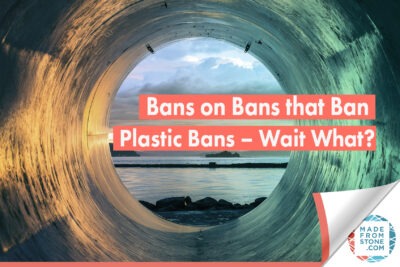Plastic Bans…and Bans on Bans
A typical plastic grocery bag takes over 20 years to break down into smaller particles, but even then, its legacy lives on. According to a study done by students at Duke University’s, Nicholas School of the Environment, 8.8 million tons of plastic waste is dumped into our oceans every year, none of which ever truly decompose. As a result of this plastic emergency, there is a passionate and strong grassroots movement across the United States and around the world to ban single use plastics, including grocery bags, drinking straws, and food containers.
Right now, there are ten states in the US that have passed a preemptive ban on single use plastics. Interestingly, this movement has also sparked a countermovement – bans on bans. There are currently seventeen states fighting bans on plastic products. Why? The root cause of this movement is simple – plastic alternatives are expensive, and these businesses don’t want to invest in a more sustainable future. In 2016, some states in the US banned the ban on plastic bags because they were concerned that it would be too difficult for large companies to switch over and too pricey for smaller businesses to afford the change. Ironically plastic bags are only a fraction of the plastic pollution problem. Consider what a shopper might put in that plastic bag; yogurt containers, chip bags, meat/chicken trays, egg containers, etc. Plastic bags are part of this problem, but there are countless products that aren’t being addressed within the bans. Regardless of current movements to halt environmentally friendly policies from being implemented, forward-thinking companies see the bigger trends in place. Brands want to embrace environmental stewardship and demonstrate corporate responsibility. They want to show their customers that they hear them and are taking proactive steps to find alternatives. These alternatives simply need to be cost effective and easy to implement. Time for a win-win solution.
Imagine a solution that can reduce plastic usage (i.e. pollution) in packaging, is just as affordable as current plastic packaging, and can be implemented immediately. Here at Okeanos™, our Made From Stone™ developments are composed primarily of calcium carbonate, aka stone. The glue which binds our stone together makes it so the product is biodegradable, compostable, or recyclable. All one must do is simply use the product and dispose of it appropriately, and with the help of our compound, it will revert back into its natural state: stone. Okeanos is looking for partners around the world to join this movement. We are accessible and affordable – making the technology much simpler to adapt than one would think. Consumers and investors are starting to demand sustainable practices from the companies and organizations they frequent and invest in. If they are provided with a cost-effective solution, businesses would jump at the chance to move to more sustainable business practices, while still remaining profitable. There are many struggles going on between governments and policy makers, consumers and business owners. Made From Stone is the most efficient solution, that works for both sides of the market.
|
|
|
|
|
|
|
|
|
|






